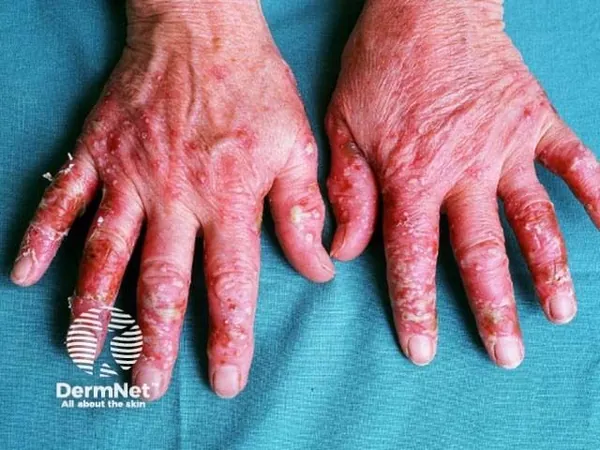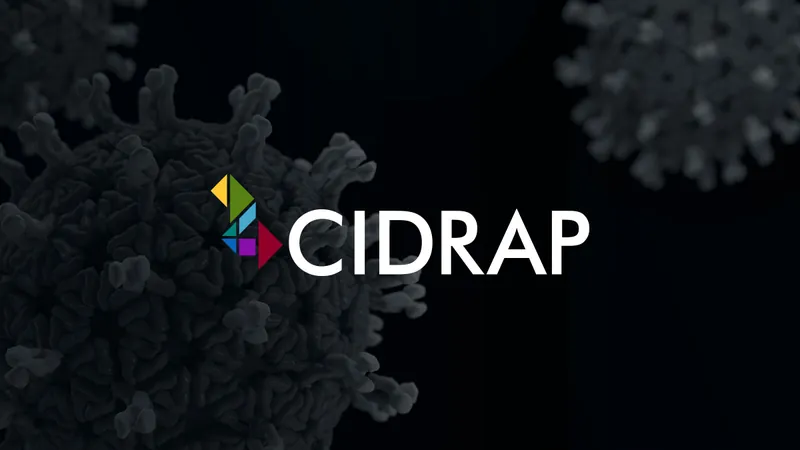
Major Study Uncovers Alarming Insights on Palmoplantar Pustulosis in Korea
2025-04-09
Author: Arjun
New Study Reveals Heavy Toll of Palmoplantar Pustulosis
A groundbreaking epidemiological study has pulled back the curtain on the struggles faced by Korean patients suffering from palmoplantar pustulosis (PPP), a condition that brings not only physical discomfort but also a significant emotional strain.
The Need for Better Treatments
Published in The Journal of Dermatology, this research underscores the urgent need for more effective treatments and clearer guidelines to enhance the quality of life for those affected. Symptoms of PPP, including intense itching, pain, and limitations in daily activities, can severely diminish well-being.
Filling the Data Gap
Historically, reliable data on PPP in Korea has been woefully inadequate. Past studies often featured small cohorts or relied on health insurance databases that misclassified the disease. The current study, led by researchers Jo and colleagues, aimed to address this gap by conducting a comprehensive analysis among a larger group of patients.
Key Research Findings
This multicenter, cross-sectional study spanned 20 hospitals and included 379 adult patients diagnosed with PPP. Between February and August 2021, detailed demographic and health data were collected, examining everything from wellness treatments to patient satisfaction.
Participants had an average age of 51.4 years and presented a notable gender imbalance—only 39.3% were male. Surprisingly, even among those with known lifestyle risk factors such as smoking and alcohol consumption, no significant correlations with PPP severity were identified.
The average severity of the condition, measured by the Palmoplantar Pustulosis Area and Severity Index (PPPASI), was reported at 10.3. Alarmingly, 66.2% of patients exhibited mild forms of the disease, yet those with severe cases showcased significantly lower mean ages and a troubling frequency of nail involvement. In severe cases, over 47% experienced nail bed issues, a stark contrast to 31.5% in milder cohorts.
Impact on Quality of Life
Assessing the impact of PPP on patients' lives revealed a striking picture. The average Dermatology Life Quality Index (DLQI) score was 12, indicating moderate impairment. For those grappling with severe symptoms, theQoL impact skyrocketed, underscoring the relentless nature of their suffering. An alarming 52.7% of participants reported substantial difficulties in their social, work, and emotional lives—issues more pronounced among the severely afflicted.
A Call for Action
Despite ongoing treatments, researchers noted that many patients continue to bear the burden of PPP. Jo and his team advocate for a renewed focus on developing more effective treatment protocols aimed at alleviating the condition's strain.
Conclusion: A Path Forward
While the study pressures the medical community to address the evident treatment gaps, it also serves as a rallying cry to improve patient care for a condition that has long been overlooked. Future strategies must focus on offering tailored therapeutic options to meet the pressing needs of those battling this challenging disease.




 Brasil (PT)
Brasil (PT)
 Canada (EN)
Canada (EN)
 Chile (ES)
Chile (ES)
 Česko (CS)
Česko (CS)
 대한민국 (KO)
대한민국 (KO)
 España (ES)
España (ES)
 France (FR)
France (FR)
 Hong Kong (EN)
Hong Kong (EN)
 Italia (IT)
Italia (IT)
 日本 (JA)
日本 (JA)
 Magyarország (HU)
Magyarország (HU)
 Norge (NO)
Norge (NO)
 Polska (PL)
Polska (PL)
 Schweiz (DE)
Schweiz (DE)
 Singapore (EN)
Singapore (EN)
 Sverige (SV)
Sverige (SV)
 Suomi (FI)
Suomi (FI)
 Türkiye (TR)
Türkiye (TR)
 الإمارات العربية المتحدة (AR)
الإمارات العربية المتحدة (AR)